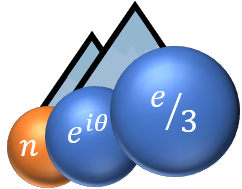The work is motivated by the puzzling results of the experiment [S. Tewari et al., Phys. Rev. B 93, 035420 (2016)], where a robust coherence recovery from a certain energy was detected for an electron injected into the quantum Hall edge at the filling factor 2. After passing through a quantum dot the electron then tunnels into the edge with a subsequent propagation towards a symmetric Mach-Zender interferometer, after which the visibility of Aharonov-Bohm (AB) oscillations is measured. According to conventional understanding its decay with the increasing energy of the injected electron was expected, which was confirmed theoretically in the bosonization framework. Here we analyze why such a model fails to account for the coherence recovery and show that the reason is essentially the destructive interference of the two quasiparticles (charge and neutral modes) forming at the edge out of the incoming electron. This statement is robust with respect to the strength of Coulomb interaction. We firstly exploit the idea of introducing an imbalance between the quasiparticles, by creating different conditions of propagation for them. It can be done by considering either dispersion or dissipation, which indeed results in the partial coherence recovery. The idea of imbalance can also be realized by applying a periodic potential to the arms of interferometer. We discuss such an experiment, which might also shed light on the internal coherence of the two edge excitations. Another scenario relies on the lowering of the energy density of the electron wave packet by the time it arrives at the interferometer in presence of dissipation or dispersion. This energy density is defined by a certain parameter, which is completely independent of the injected energy, which naturally explains the emergence of a threshold energy in the experiment.

 PDF version
PDF version
